|
The Harriet Beecher Stowe House continues to undergo restoration efforts as the new year progresses. Additions and renovations had been completed on the house through the ownership of the Montfort family and later a boardinghouse and tavern. Through this restoration, the house will be more similar to when the Beecher family resided there. This will allow visitors to connect with the Beecher family and experience how the home looked when they were residents in the 1830s and 1840s. However, the connections with future homeowners will remain as they will be discussed on tours and one room will remain a replica of a room in the boardinghouse. Through paint analysis testing conducted by experts, the brick was discovered to have been yellow in the 1840s. These 188-year old bricks have up to 17 layers of paint that are being removed. Once the paint is removed, the bricks will be evaluated. The additional brick from future years will be replaced with replica to create a consistent appearance on the exterior of the house. Once the brick is completely stripped of paint and replica is inserted, the exterior will be painted a pale yellow to match the paint analysis discovery. 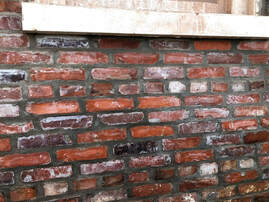 January 21, 2021 January 21, 2021 Chris Buchanan, Ohio History Connection’s Restoration Specialist, uses his skills and experience to explain the restoration process of the Harriet Beecher Stowe House. The mason work on the house is unique in certain places. The back and sides of the house consist of struck joints in which the mortar used in spaces between the bricks is sloped inward to be flush with the surface. This is a common practice for mason work. The front of the house was created using ruled joints which gave the brick a refined and handmade look to it. On December 15th, the 1908 bay windows were removed. When the Beecher family were residents of the home there was brick wall and smaller windows in place of the bay windows. Through expert observation, it was determined that the original windows were located to the left of the center of the room close to the old kitchen. Smaller windows to better match the appearance of the Beecher home will replace this area on the north side of the house. To see videos of the restoration process, click below.
www.youtube.com/playlist?list=PLnlusQRbjQuE5x8o00fsbDRC_lJr_sVks
5 Comments
This post continues a series discussing some of the United States's pressing political issues leading up to the Civil War, when the impact of Harriet Beecher Stowe's writing was also being felt across the country. This installment discusses the abolitionist work of Henry Ward Beecher, Harriet's younger brother who had studied at Lane Seminary in Cincinnati and pastored in Indianapolis before moving to New York. CLICK HERE to read previous installments. The Kansas–Nebraska Act of 1854 called for popular sovereignty, whether the Kansas Territory would allow or prohibit slavery, and thus enter the Union as a slave state or a free state would be left up to the people living there. Both pro- and anti-slavery supporters tried to lure settlers to Kansas in order to sway their decision one way or the other. Missouri entered the Union as a slave state in 1821 and many of its citizens held pro-slavery views. Some of them crossed into Kansas claiming to be residents in an attempt to influence the decision. The seven year conflict was characterized by electoral fraud, raids, and murders carried out in Kansas and neighboring Missouri by pro-slavery "Border Ruffians" and anti-slavery "Free-Staters." The antagonism between sides verged on civil war, and the period became known as "Bleeding Kansas.” 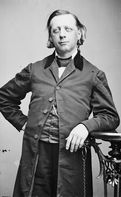 Henry Ward Beecher Henry Ward Beecher Henry Ward Beecher was preacher and passionate abolitionist. His Plymouth Church in Brooklyn, NY, along with the New England Immigrant Aid Society, founded in Boston, raised money to send rifles to help the anti-slavery settlers protect themselves from the Border Ruffians. These became known as Beecher’s Bibles after Henry Ward stated that trying to teach slave owners the errors of their ways was like reading “the Bible to Buffaloes.” On March 30, 1855, the Kansas Territory elected its first territorial legislature who would decide whether the territory would allow slavery. Border Ruffians from Missouri again streamed into the territory to vote, and pro-slavery delegates were elected to 37 of the 39 seats. Questions about electoral fraud resulted in a subsequent special election in May but the pro-slavery camp again prevailed with an 29–10 advantage. Congress sent a three-man special committee to the Kansas Territory in 1856 in response to the disputed votes and rising tension, The committee report concluded that had the March election been limited to "actual settlers" it would have elected a “free-state” legislature. The report also stated that the legislature actually seated "was an illegally constituted body, and had no power to pass valid laws”. Nevertheless, the pro-slavery legislature residing in Shawnee Mission, Kansas, began passing laws favorable to slaveholders. In August, anti-slavery residents met to formally reject the pro-slavery laws passed by what they called the "Bogus Legislature". They quickly elected their own Free-State delegates to a separate legislature based in Topeka and drafted the first territorial constitution, the Topeka Constitution. The federal government under the administration of President Franklin Pierce refused to recognize the Free-State legislature. In a message to Congress on January 24, 1856, Pierce declared the Topeka government insurrectionist in its stand against pro-slavery territorial officials. These “rival” constitutions were the first of several written by pro and anti slavery legislators who considered the opponent’s constitutions illegitimate. Violent conflict across eastern Kansas lasted for several years most notably the sacking of Lawrence Kansas and the presence of a strident abolitionist named John Brown. The hostilities continued until a new territorial governor, John W. Geary, took office and managed to prevail upon both sides for peace. Ultimately, Kansas was admitted to the Union as a free state in January, 1861, following the departure of Southern legislators from Congress during the secession crisis. Throughout the Civil War Union control of Kansas was never seriously threatened. Sources: The War Before the War by Andrew Delbanco (2018) Penguin Press https://www.kshs.org/kansapedia/kansas-territory/14701 About the author:
Dr. Nicholas Andreadis is a volunteer at the Harriet Beecher Stowe House. He was a professor and dean at Western Michigan University prior to moving to Cincinnati. FOR IMMEDIATE RELEASE:
January 15, 2021 Media Contact: Christina Hartlieb 513-751-0651 [email protected] The Harriet Beecher Stowe House is closed to the public effective Friday, January 15, 2021 due to Hamilton County’s Level 4 (purple) classification. As a site of the Ohio History Connection, we follow their direction regarding public visitor safety for the site system. According to their coronavirus policy, sites will be closed to the public in all counties receiving a Level 4 (purple) rating from the Ohio Department of Health Public Health Advisory System. We will re-open to the public at the direction of the Ohio History Connection. Any visitors with previously scheduled tours will be contacted regarding their appointments. Staff will continue regular employment from home or on-site according to the nature of their work. See updates at www.stowehousecincy.org. Online programming at the Harriet Beecher Stowe House will continue as previously scheduled during the public closure. February programs include:
### About Harriet Beecher Stowe House The nonprofit Friends of Harriet Beecher Stowe House manages a Cincinnati home where Harriet Beecher Stowe lived during the formative years that led her to write the best-selling novel Uncle Tom’s Cabin. This historic site is part of the Ohio History Connection’s network of more than 50 sites and museums across Ohio. For more information about programs and events, call 513-751-0651 or visit www.stowehousecincy.org. Ohio History Connection The Ohio History Connection, formerly the Ohio Historical Society, is a statewide history organization with the mission to spark discovery of Ohio’s stories. As a 501(c)(3) nonprofit organization chartered in 1885, the Ohio History Connection carries out history services for Ohio and its citizens focused on preserving and sharing the state’s history. This includes housing the state historic preservation office, the official state archives, local history office and managing more than 50 sites and museums across Ohio. For more information on programs and events, visit ohiohistory.org. Two landmark cultural centers on either side of The Ohio work to add meaning and relevance to their offerings.
Harriet Beecher Stowe House The big white house at the corner of Gilbert and MLK in Walnut Hills looks dramatically different right now, and a little less white. Restoration crews have been working steadily for several months uncovering the original style and architecture of the Harriet Beecher Stowe House. The house’s original Federal architectural style is now clear to see. Keep reading at moversmakers.org. |
Archives
March 2025
Categories
All
|
|

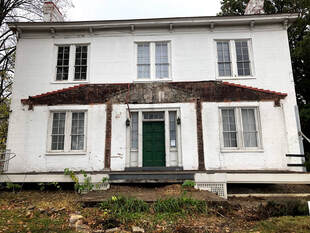
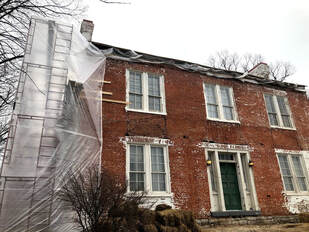
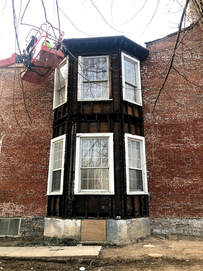

 RSS Feed
RSS Feed